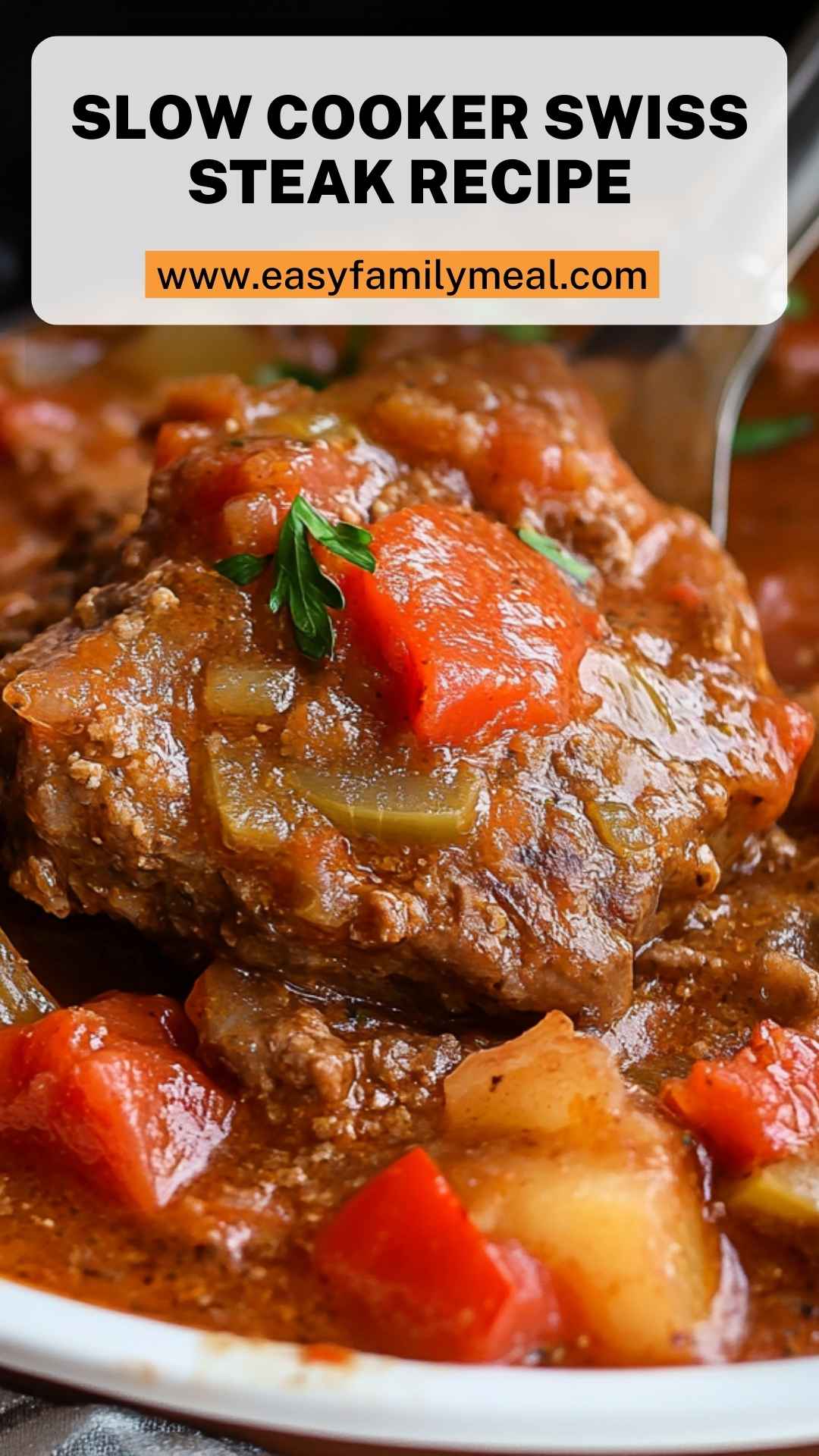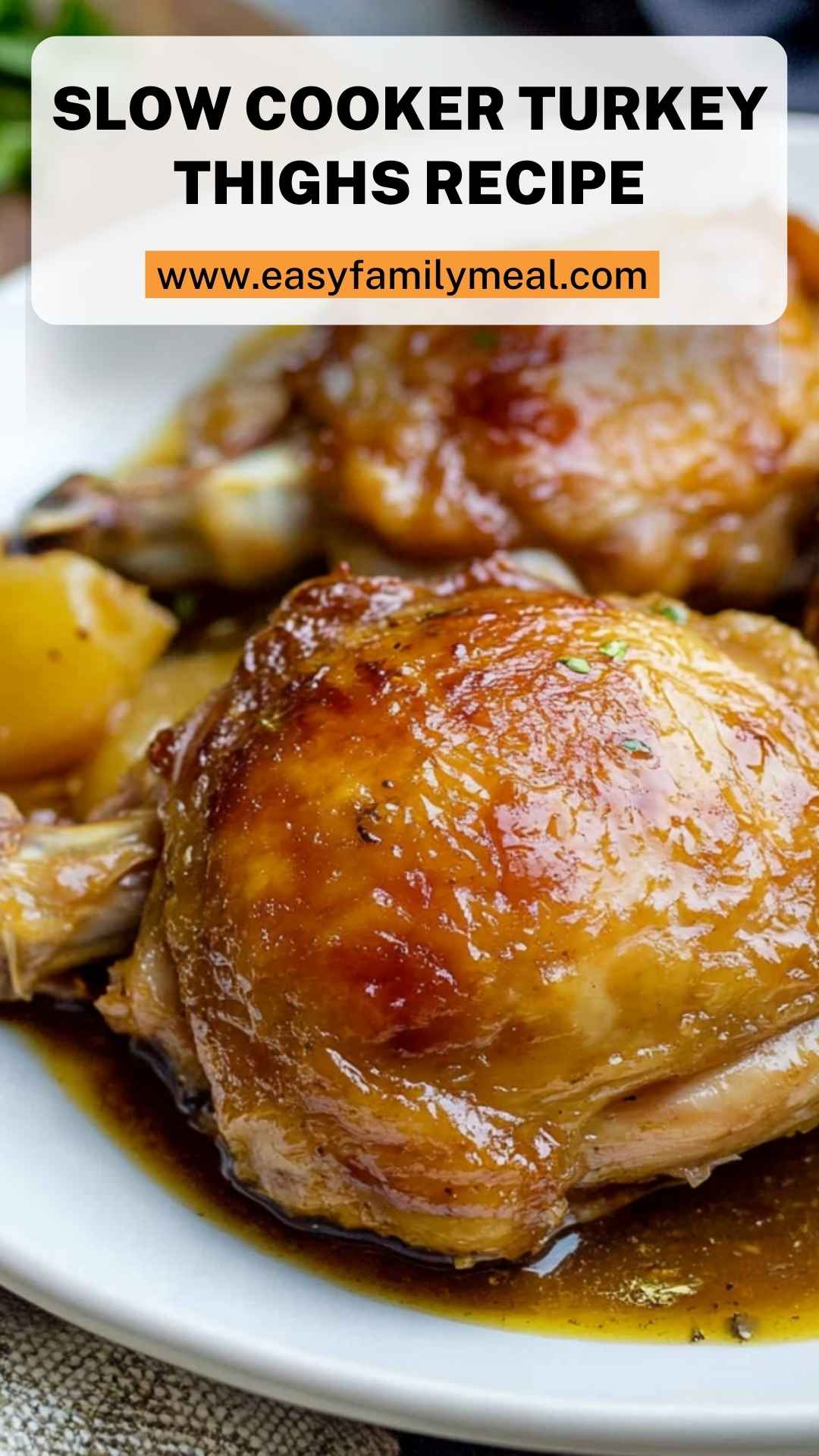When it comes to enjoying a hearty beef stew, the right accompaniments can elevate the experience. Here are some excellent pairings that will complement the rich flavors of your best cut beef stew braise:
1. Crusty Bread: Soft inside and crusty outside, a loaf of fresh French bread will soak up the savory juices of your stew. Dipping into that warm bowl is comforting and delightful.
2. Creamy Mashed Potatoes: Their smooth texture pairs perfectly with the chunky beef and vegetables in the stew. Top it off with a little gravy from the stew for added yum.
3. Simple Green Salad: A light salad with mixed greens, cherry tomatoes, and a vinaigrette dressing offers a refreshing contrast. The crispness of the greens cuts through the hearty stew.
4. Steamed Vegetables: Broccoli or green beans lightly steamed and drizzled with olive oil provide color and balance. They add a crunchy freshness that complements the dish beautifully.
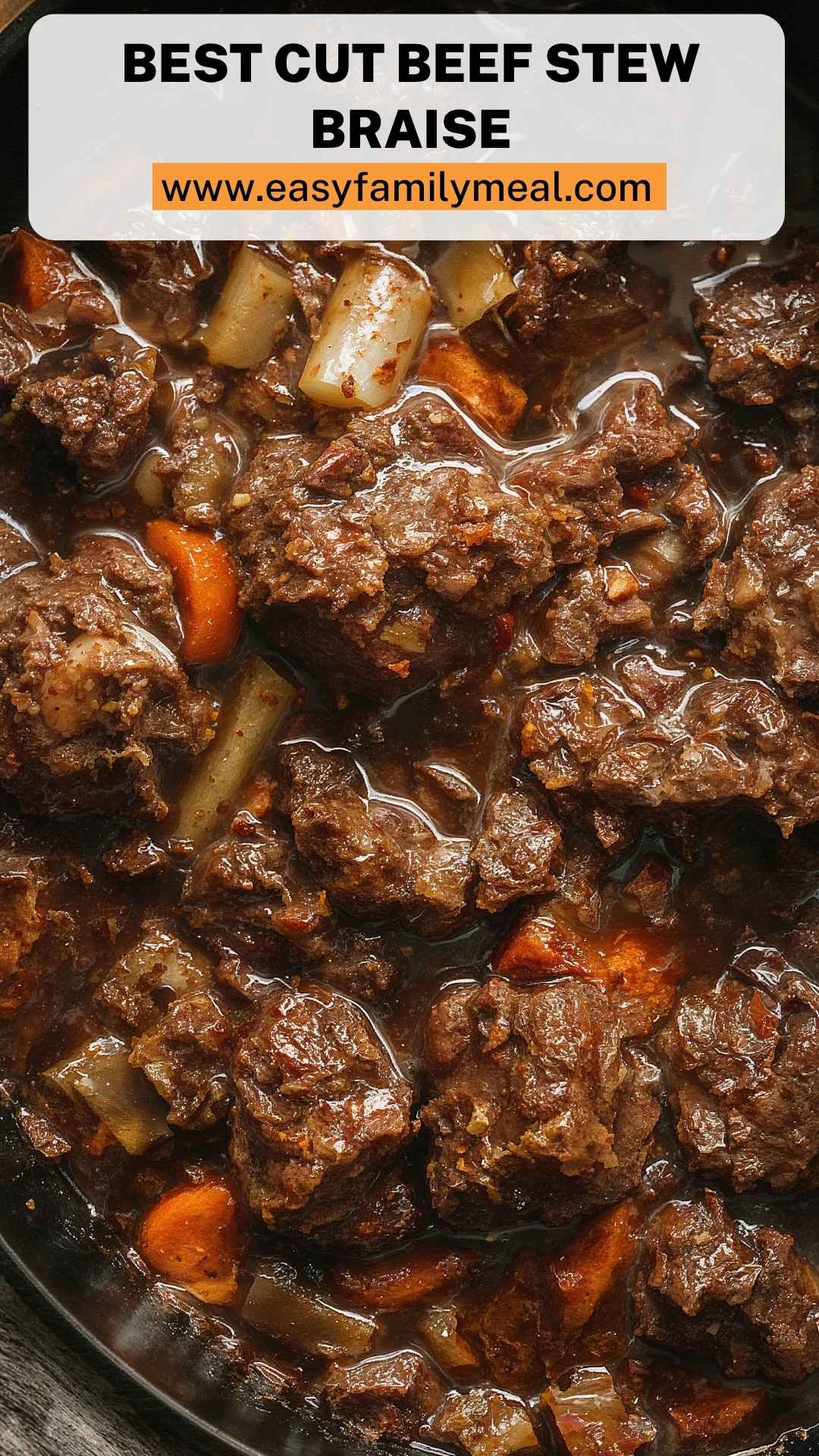
What is the Best Cut Beef Stew Braise?
Let’s start by answering the most important question: what exactly is the best cut beef stew braise? In essence, it’s a method of cooking beef cubes slowly in a rich liquid until tender. The selection of beef is crucial—some cuts are better suited for braising due to their marbled fat and connective tissue.
Why This Recipe Works
1. Choice of Meat Matters: Using cuts like chuck roast or brisket makes all the difference. These cuts break down beautifully during cooking, resulting in tender meat that practically melts in your mouth.
2. Flavorful Liquid Base: The combination of beef broth and red wine not only provides depth but also balances the rich flavors of the beef. The wine adds acidity, enhancing the overall taste.
3. Layering Ingredients: Cooking aromatics like onions, garlic, and leeks in olive oil before adding beef creates a foundational flavor. It’s all about developing taste layers.
4. Slow Cooking is Key: Braising involves a long, gentle cooking process. This method allows for the flavors to combine and the meat to become tender. The longer it simmers, the better it tastes.
Ingredients You’ll Need To Make This Best Cut Beef Stew Braise
Before we start cooking, gather the following ingredients:
- 2 tablespoons olive oil
- 1/4 cup all-purpose flour
- Salt and freshly ground black pepper, to taste
- 2 pounds beef stew cubes, cut into 1-2 inch pieces
- 1 large yellow onion, diced
- 2 cloves garlic, minced
- 4 medium carrots, sliced
- 2 fresh leeks, cleaned and chopped
- 3 ripe plum tomatoes, chopped
- 2 tablespoons concentrated tomato paste
- 1 cup dry red wine
- 3 cups rich beef broth (plus an extra cup if needed)
- 2 dried bay leaves
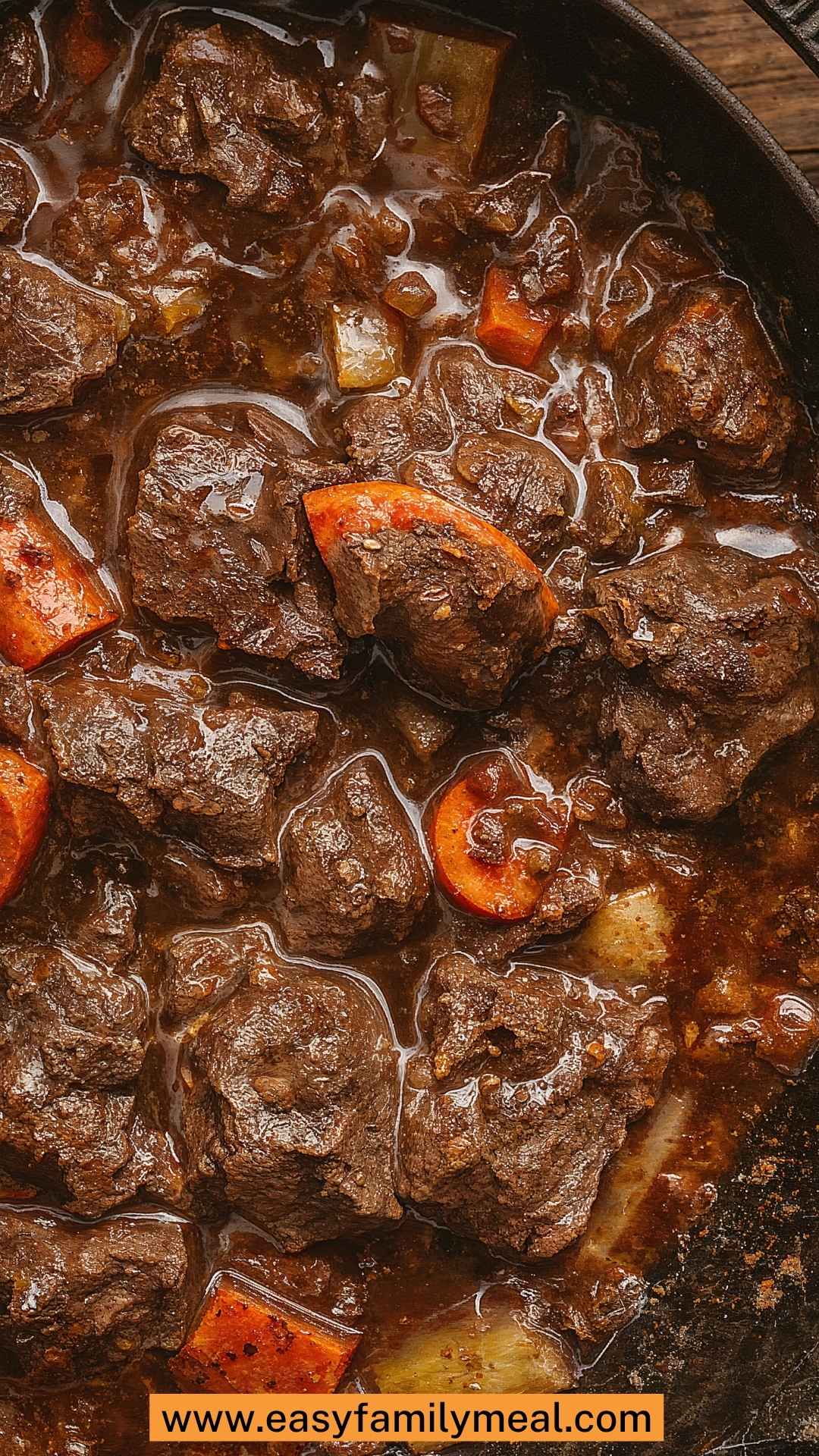
How To Make This Beef Stew Braise
Now that you have all your ingredients ready, let’s get cooking!
Step 1: Prep the Meat
First, start by seasoning your beef stew cubes generously with salt and freshly cracked pepper. Next, dust them with flour to create a light coating.
This step is important for developing a nice crust when you sear the meat.
Step 2: Sear the Beef
In a large, heavy pot or Dutch oven, heat the olive oil over medium-high heat. Once hot, add the beef in batches to avoid overcrowding.
Sear each piece until browned on all sides—about 4 minutes per side. This caramelization brings out the flavors.
Step 3: Sauté the Aromatics
Remove the meat and set it aside. In the same pot, lower the heat to medium and add the diced onions, leeks, and minced garlic.
Cook until the onions become translucent and fragrant, roughly 5-7 minutes.
Step 4: Add Vegetables
Now it’s time to throw in the carrots and chopped tomatoes along with the concentrated tomato paste. Stir for a few minutes to combine. The paste will deepen the flavor profile.
Step 5: Deglaze with Wine
Pour in the red wine, scraping the bottom of the pot to release all those flavorful brown bits. Let the wine simmer for about 2-3 minutes until it reduces slightly.
Step 6: Return the Beef
Return the seared beef to the pot along with any juices. Add the beef broth and bay leaves. Ensure the meat is submerged but not crowded.
Step 7: Braise
Bring everything to a gentle boil. Once boiling, reduce the heat to low, cover the pot, and let it simmer for about 2-3 hours.
Check occasionally and add more broth if necessary.
Step 8: Adjust Seasoning
After a couple of hours, taste your stew. Adjust the seasoning with more salt and pepper as needed.
Feel free to let it cook longer if you want even more tender beef.
Tips for Perfecting Your Beef Stew Braise
- Browning is Key: Don’t rush the searing process. A good brown crust develops flavor.
- Be Patient: The longer you braise, the better the flavor. Don’t skip on the magic of time.
- Quality Ingredients: Use a good quality wine and broth. They impact the end result hugely.
- Experiment with Spices: Feel free to add herbs like thyme, rosemary, or even a pinch of red pepper flakes for a kick.
- Sauté the Veggies: Sautéing veggies before adding liquid highlights their flavors.
Nutrition Information
Per serving (assuming approximately six servings):
- Calories: 350-400
- Protein: 35g
- Carbohydrates: 14g
- Fat: 18g
- Fiber: 3g
This stew packs significant nutritional value while being considerably satisfying.
How to Store The Leftovers?
If you have leftovers (which is rare, but it happens!), let the stew cool completely. Transfer it into airtight containers and store it in the refrigerator for up to 3 days. For longer storage, consider freezing it.
It will last up to three months in the freezer. Reheat on the stove, adding a splash of broth or water to restore moisture.
Recommended Side Dishes for Best Cut Beef Stew Braise
1. Garlic Bread: Freshly baked garlic bread can be a delightful addition. The buttery, garlicky flavor pairs well with the stew.
2. Polenta: Creamy polenta offers a delightful consistency that absorbs the stew’s delicious broth.
3. Roasted Brussels Sprouts: Their earthy flavors can balance the heaviness of the stew wonderfully.
4. French Fries: Sometimes, it’s nice to have something crispy to munch on alongside the stew. Simple yet tasty!
Substitute Options for Ingredients
1. Beef Cubes: If you can’t find stew meat, a chuck roast cut into cubes will work just as well.
2. Red Wine: If you’re avoiding alcohol, substitute with beef broth or grape juice for a non-alcoholic version.
3. Olive Oil: You can replace it with vegetable oil if olive oil isn’t available, but it adds a nicer flavor.
4. Tomato Paste: If you’re out of tomato paste, ketchup can work in a pinch, although it alters the taste slightly.
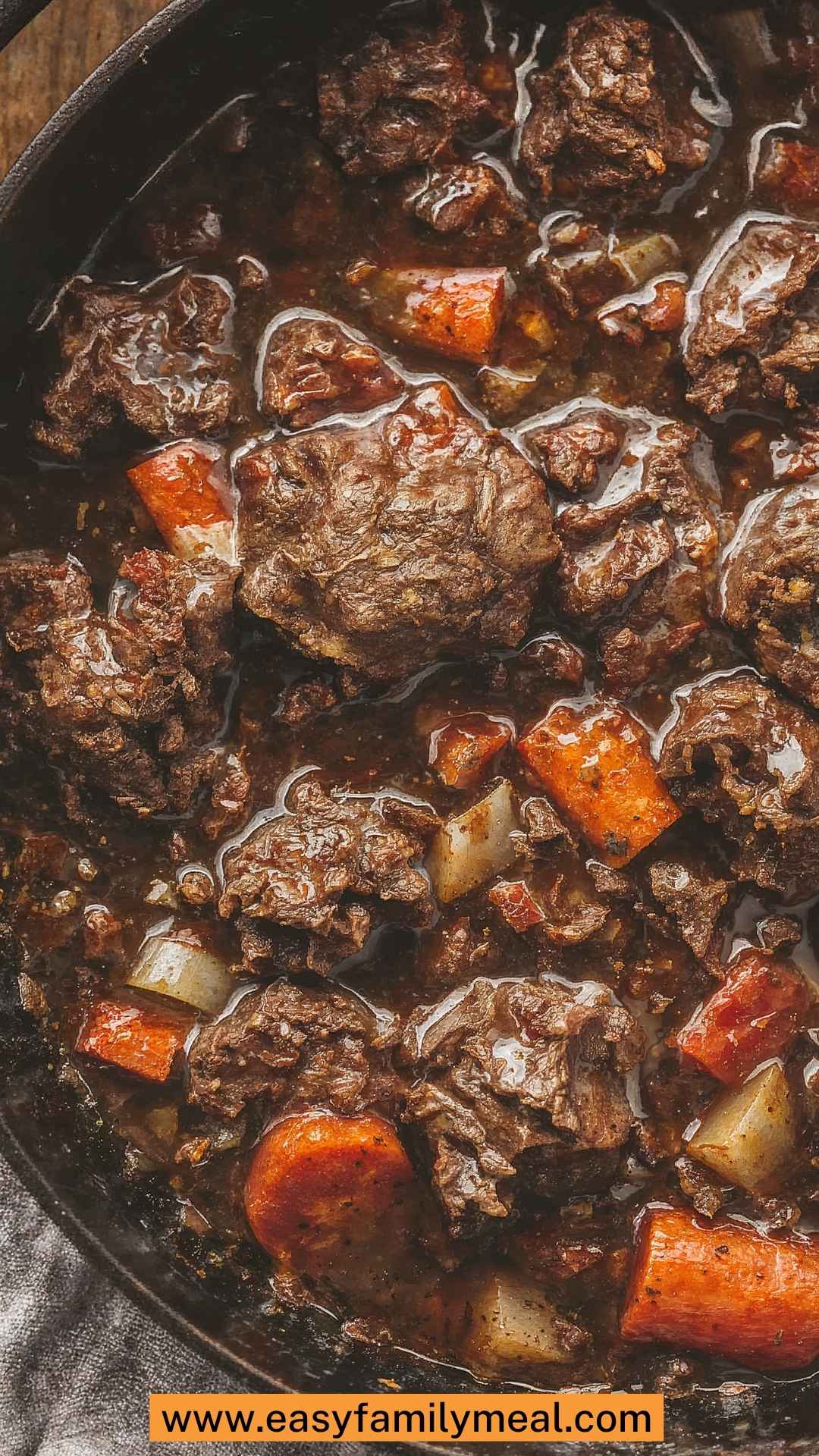
Conclusion
There you have it—the ultimate guide to creating the best cut beef stew braise. With quality ingredients and a bit of patience, you’ll have a dish that brings everyone to the table.
This stew captures the essence of comfort food in every bite. So, gather those loved ones around, ladle out servings of this hearty goodness, and enjoy the warmth it brings to your home. Happy cooking!
You’ll also like the following recipes!
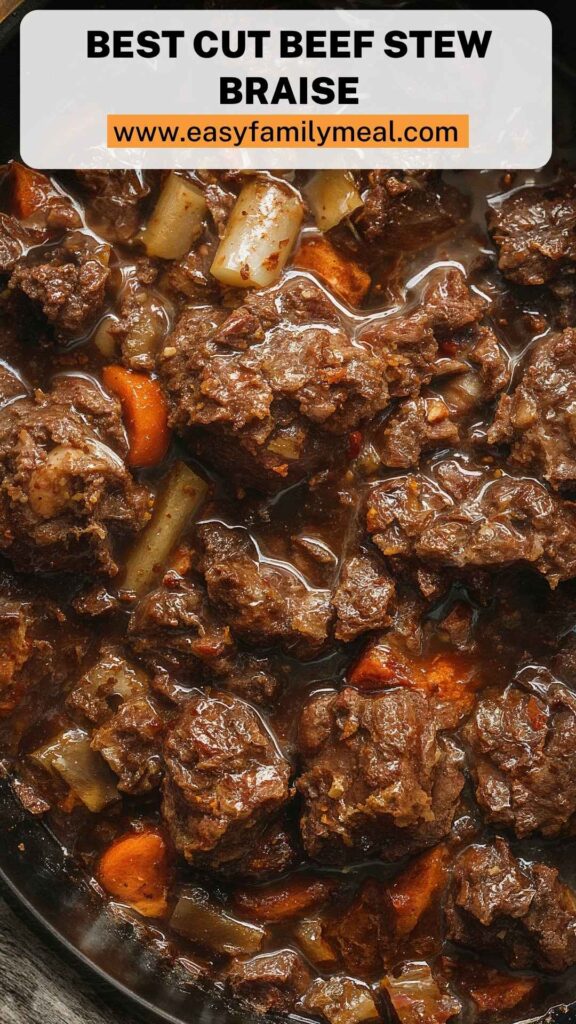
Best Cut Beef Stew Braise – Easy Family Meal
Description
Today, we’re diving into a classic comfort dish that warms the soul: the best cut beef stew braise.
This dish makes dreary days feel cozier and gatherings more intimate. Whether you’re super hungry after a long day or hosting friends over for dinner, this beef stew recipe will do more than satisfy.
It promises a symphony of flavors in each bite, transforming simple ingredients into an unforgettable meal.
A beef stew is one of those dishes that feels like a big hug. It fills your kitchen with sumptuous aromas, drawing everyone in. I've spent a good deal of time perfecting the process—understanding which cuts of beef work best, which spices mingle nicely, and how to create a rich, deep flavor profile.
So, let’s roll up our sleeves and get to work on your new favorite recipe!
Ingredients
Instructions
Step 1: Prep the Meat
-
First, start by seasoning your beef stew cubes generously with salt and freshly cracked pepper. Next, dust them with flour to create a light coating.
This step is important for developing a nice crust when you sear the meat.
Step 2: Sear the Beef
-
In a large, heavy pot or Dutch oven, heat the olive oil over medium-high heat. Once hot, add the beef in batches to avoid overcrowding.
Sear each piece until browned on all sides—about 4 minutes per side. This caramelization brings out the flavors.
Step 3: Sauté the Aromatics
-
Remove the meat and set it aside. In the same pot, lower the heat to medium and add the diced onions, leeks, and minced garlic.
Cook until the onions become translucent and fragrant, roughly 5-7 minutes.
Step 4: Add Vegetables
-
Now it’s time to throw in the carrots and chopped tomatoes along with the concentrated tomato paste. Stir for a few minutes to combine. The paste will deepen the flavor profile.
Step 5: Deglaze with Wine
-
Pour in the red wine, scraping the bottom of the pot to release all those flavorful brown bits. Let the wine simmer for about 2-3 minutes until it reduces slightly.
Step 6: Return the Beef
-
Return the seared beef to the pot along with any juices. Add the beef broth and bay leaves. Ensure the meat is submerged but not crowded.
Step 7: Braise
-
Bring everything to a gentle boil. Once boiling, reduce the heat to low, cover the pot, and let it simmer for about 2-3 hours.
Check occasionally and add more broth if necessary.
Step 8: Adjust Seasoning
-
After a couple of hours, taste your stew. Adjust the seasoning with more salt and pepper as needed.
Feel free to let it cook longer if you want even more tender beef.
Nutrition Facts
Servings 4
- Amount Per Serving
- Calories 400kcal
- % Daily Value *
- Total Fat 18g28%
- Total Carbohydrate 14g5%
- Dietary Fiber 3g12%
- Protein 35g70%
* Percent Daily Values are based on a 2,000 calorie diet. Your daily value may be higher or lower depending on your calorie needs.
Note
- Browning is Key: Don’t rush the searing process. A good brown crust develops flavor.
- Be Patient: The longer you braise, the better the flavor. Don’t skip on the magic of time.
- Quality Ingredients: Use a good quality wine and broth. They impact the end result hugely.
- Experiment with Spices: Feel free to add herbs like thyme, rosemary, or even a pinch of red pepper flakes for a kick.
- Sauté the Veggies: Sautéing veggies before adding liquid highlights their flavors.



